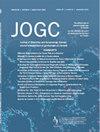考虑种族和社会经济地位的子痫前期筛查-竞争风险模型和风险因素评分的比较。
IF 2.2
Q2 OBSTETRICS & GYNECOLOGY
引用次数: 0
摘要
目的:比较用危险因素和多变量竞争风险模型筛查子痫前期风险。方法:本前瞻性队列研究纳入单胎妊娠,无重大异常,分娩≥24周。通过英国国家健康与护理卓越研究所(NICE)的指导,比较胎儿医学基金会(FMF)模型和临床危险因素之间的PE风险,并通过将黑人和社会剥夺(多重剥夺指数[IMD]十分位数1-4)作为中等危险因素,进行“NICE修正”。为了比较筛查策略,我们将FMF筛查阳性率(SPR)与NICE相匹配。结果:在11-13周时,对44813例妊娠进行了早产风险评估;368例(0.8%)发生早产儿PE。在SPR = 7.4%时,FMF(相对于NICE)几乎是早产PE DR的三倍,但在黑人女性中更多(19.8%)。SPR = 7.4%的FMF模型对早产儿PE的DR = 67.7%,与nice改良筛选(67.4%,SPR = 40.1%)相似。在35-36周时,对29035例妊娠进行PE风险评估;654例(2.3%)发生PE。在SPR = 10.9%时,无论IMD或黑人种族,FMF(与NICE相比)在PE DR后增加了一倍以上。SPR = 10.9%的FMF对随后PE的DR至少与nice改良筛选(61.5%)一样高(70.5%),SPR = 37.4%。结论:FMF模型检测PE风险类似于基于风险因素的筛查,增加了黑人种族和社会剥夺作为中等风险因素,但SPR明显较低,在11-13周时提供阿司匹林以预防早产PE,以及在35-36周时足月分娩可能预防足月PE。本文章由计算机程序翻译,如有差异,请以英文原文为准。
Preeclampsia Screening Taking Into Account Ethnicity and Socioeconomic Status—A Comparison of the Competing Risks Model and Risk Factor Scoring
Objectives
This study aimed to compare preeclampsia (PE) risk screening by risk factors and the multivariable competing risks model.
Methods
This prospective cohort study enrolled singleton pregnancies, without major anomalies, and delivering at ≥24 weeks. PE risk was compared between the Fetal Medicine Foundation (FMF) model and clinical risk factors by National Institute for Health and Care Excellence (NICE) guidance, U.K. and “NICE-modified” by adding Black ethnicity and social deprivation (index of multiple deprivation deciles 1–4) as moderate risk factors. To compare screening strategies, we matched the FMF screen-positive rate (SPR) to NICE.
Results
At 11–13 weeks, preterm PE risk was assessed in 44 813 pregnancies; 368 (0.8%) developed preterm PE. At SPR = 7.4%, FMF (vs. NICE) almost tripled preterm PE detection rate (DR) but by more (by 19.8%) among Black women. The FMF model at SPR = 7.4% had DR = 67.7% for preterm PE, similar to NICE-modified screening (67.4%, which had SPR = 40.1%). At 35–36 weeks, subsequent PE risk was assessed in 29 035 pregnancies; 654 (2.3%) developed PE. At SPR = 10.9%, FMF (vs. NICE) more than doubled subsequent PE DR, regardless of index of multiple deprivation or Black ethnicity. FMF at SPR = 10.9% had DR for subsequent PE at least as high (70.5%) as NICE-modified screening (61.5%), which had SPR = 37.4%.
Conclusions
The FMF model detects PE risk similar to risk factor–based screening, with addition of Black ethnicity and social deprivation as moderate risk factors but at substantially lower SPR at 11–13 weeks when aspirin is offered to prevent preterm PE and at 35–36 weeks when timed birth at term may prevent term PE.
求助全文
通过发布文献求助,成功后即可免费获取论文全文。
去求助
来源期刊

Journal of obstetrics and gynaecology Canada
OBSTETRICS & GYNECOLOGY-
CiteScore
3.30
自引率
5.60%
发文量
302
审稿时长
32 days
期刊介绍:
Journal of Obstetrics and Gynaecology Canada (JOGC) is Canada"s peer-reviewed journal of obstetrics, gynaecology, and women"s health. Each monthly issue contains original research articles, reviews, case reports, commentaries, and editorials on all aspects of reproductive health. JOGC is the original publication source of evidence-based clinical guidelines, committee opinions, and policy statements that derive from standing or ad hoc committees of the Society of Obstetricians and Gynaecologists of Canada. JOGC is included in the National Library of Medicine"s MEDLINE database, and abstracts from JOGC are accessible on PubMed.
 求助内容:
求助内容: 应助结果提醒方式:
应助结果提醒方式:


